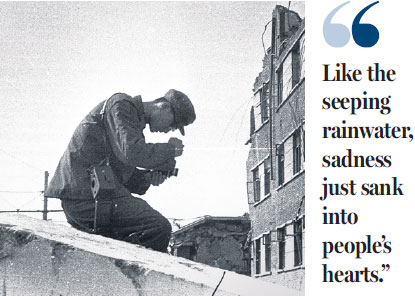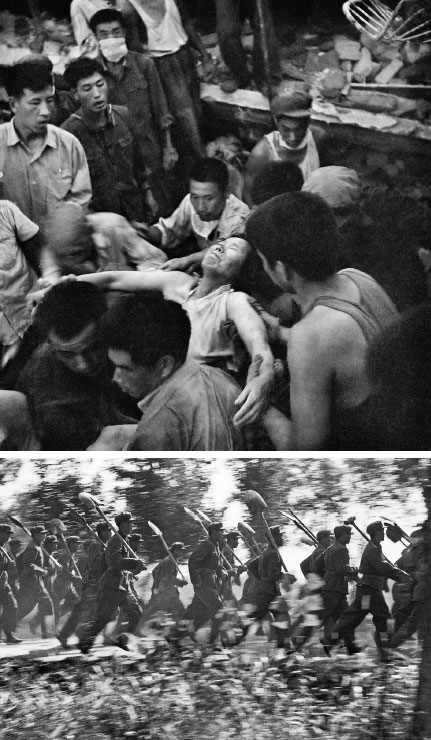Tangshan earthquake 'changed everything'
Updated: 2016-08-09 15:21
By Zhao Xu(China Daily USA)
|
||||||||
Photographer rushes to rescue as part of Army unit, documents unforgettable moments of pain
The lives of Lu Guilan and photographer Wang Wenlan mingled for a few minutes on Aug 9, 1976.
For more than 12 days, Lu, a mother in her 40s, had survived under debris with nothing to eat and drinking her own urine along with rainwater that seeped through the cracks of fallen bricks and mortar.
She had become trapped after the deadliest earthquake of the 20th century hit Tangshan, Hebei province, at 3 am on July 28, 1976, killing more than 240,000 and injuring another 16,000.
The moment Lu was carried out by rescuers, eyes shut and limbs stretched out, was captured by Wang, then a 23-year-old Army photographer.
"The long exposure has given the picture a slightly soft focus. I later used strong film developing fluid in order to heighten the image," recalled Wang, who is today vice-chairman of the China Photographers' Association. "The result is stark immediacy accentuated by a raw sense of history."
Miraculous survival
Today, the 63-year-old vividly remembers the journey to Tangshan, 200 kilometers north of Beijing.
"We set off at 9 am, six hours after the earthquake wreaked havoc. It took 20 hours due to all the damage done to roads and bridges," he said.
"When night fell, a deadly silence also fell. For most people, the fight for life was over. Occasionally, there would be the sound of wheels grinding on the rugged - and ruptured - ground. Seriously injured people, and probably their remains, were being carried away on carts."
Given all that, the survival of Lu was a sheer miracle. "Eight days into the rescue, soldiers had stopped finding new survivors. Then, at noon on the 13th day after our arrival, I was told that a trace of life had been discovered underneath the crumbled structure of a hospital," said Wang, who rushed to the site. "With no heavy machinery, all the digging had to be done by hand."
The effort went on for seven hours. By the time the last concrete slab was about to be lifted, Wang put down his spade and took up his camera.
"It was 7 pm. Night had started to invade, but there was still enough light for a picture," said Wang, who just that morning had checked out of a makeshift hospital.
The hospital consisted of some tents in a sea of rubble.
"I was lying there for a week. Malaria was strongly suspected, since all of us had been drinking from a nearby swimming pool since day one," he said.
"At one point, with swarms of flies droning overhead and the mixed smell of rotting bodies and sterilizing bleach in our nostrils, I seriously thought about death. But then a doctor inspected me and suggested drinking iodine tincture.
"I recovered just in time to take Lu's picture," said Wang, who took about 1,000 pictures altogether.
Haunting memory
Most of these images, including Lu's rescue, were first published in 1986, a decade of the earthquake, when Tangshan was commemorating the disaster with a photo exhibition. Wang returned to Tangshan and met Lu.
The last time Wang went to Tangshan was five years ago. The recovery is evident.
"The city is as modern as I can reasonably expect," he said.
However, the photographer has not doubt that the memory of the earthquake still haunts.
"Daybreak came a few hours after my arrival in Tangshan in July 1976. As the faint sunlight revealed the full scale of the disaster, the only thing I could think about was an atomic bomb," he said.
"The next few days saw sweeping wind and rain every night. It was as if nature intended to obliterate from the surface of earth any trace of the tragedy. But like the seeping rainwater, sadness just sank into people's hearts, deeper and deeper."
Wang joined China Daily in 1980 and has continued to shoot pictures for the paper.
"I first picked up a camera at 14. For the next seven or eight years, I took a lot of pictures of myself.
"But Tangshan changed everything. It was the first time I turned my lens toward people in pain, and toward history unraveling," he said. "That was really the end of a self-infatuated young man and the beginning of a serious photojournalist."
zhaoxu@chinadaily.com.cn
|
Left to right: People get water from a temporary supply station a few days after the Tangshan earthquake. A woman cries as she faces debris left by the quake. Piles of rubble were a common scene. Photos By Wang Wenlan |
|
Wang Wenlan, now a China Daily photographer, is shown documenting the rescue mission when he participated as a soldier in 1976. |
|
Top: Lu Guilan, a middleaged woman, is rescued by soldiers after surviving under wreckage for more than 12 days. Bottom: Soldiers run to the rescue after the magnitude 7.8 quake hit Tangshan, Hebei province, on July 28, 1976. Photos By Wang Wenlan |
(China Daily USA 08/09/2016 page5)
- New lab will explore South China Sea resources
- 40 telecom fraud suspects returned to China
- Cheery promotional video introduces G20 city Hangzhou to Europe
- Researchers claim intelligence services targeted Chinese airline
- Tunnel-bus production center faces delays
- Chinese Valentine's Day Special: Love conquers everything
- Nepal's newly elected PM takes oath
- Texas gun law worries incoming students
- China vows to deepen economic, trade cooperation with ASEAN
- Fire guts Emirates jet after hard landing; 1 firefighter dies
- Egypt's Nobel-laureate scientist dies of illness in US
- THAAD muscle flexing unmasks anxiety over declining hegemony

 Top swimmer Sun Yang makes sweet revenge
Top swimmer Sun Yang makes sweet revenge
 Lin Yue and Chen Aisen win Olympic gold medal
Lin Yue and Chen Aisen win Olympic gold medal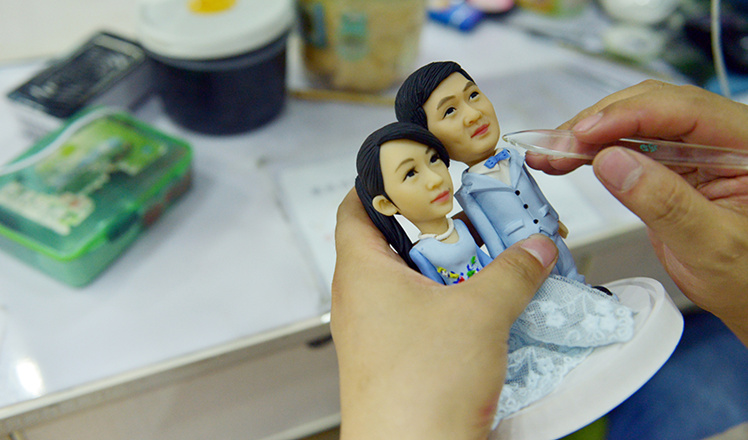
 Artist creates mini-mes for loving couples at Qixi festival
Artist creates mini-mes for loving couples at Qixi festival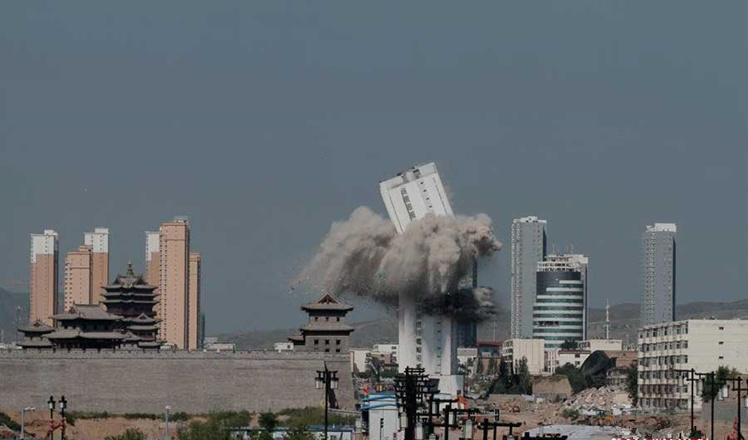
 Skyscraper demolished outside ancient city
Skyscraper demolished outside ancient city
 Chinese Valentine: Love conquers everything
Chinese Valentine: Love conquers everything
 Ace swimmers make record-breaking splash in Rio
Ace swimmers make record-breaking splash in Rio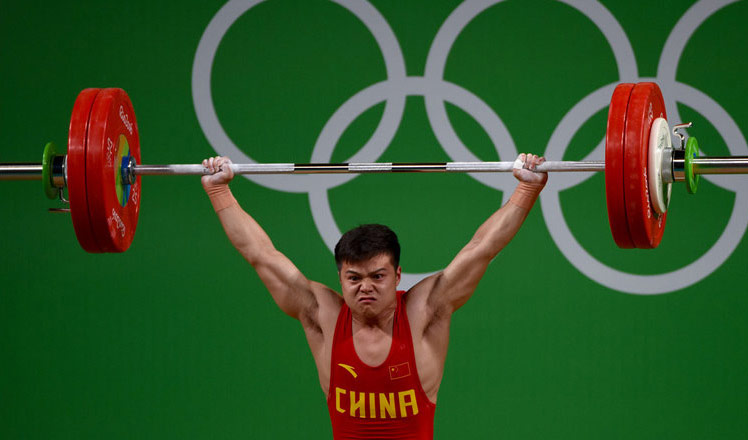
 Chinese weightlifter Long smashes world record
Chinese weightlifter Long smashes world record
 China wins first diving gold of Rio Games
China wins first diving gold of Rio Games
Most Viewed
Editor's Picks

|

|

|

|

|

|
Today's Top News
US launches airstrikes against IS targets in Libya's Sirte
Ministry slams US-Korean THAAD deployment
Two police officers shot at protest in Dallas
Abe's blame game reveals his policies failing to get results
Ending wildlife trafficking must be policy priority in Asia
Effects of supply-side reform take time to be seen
Chinese State Councilor Yang Jiechi to meet Kerry
Chinese stocks surge on back of MSCI rumors
US Weekly

|

|

